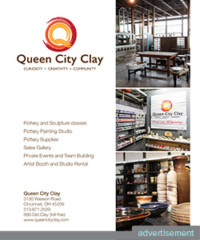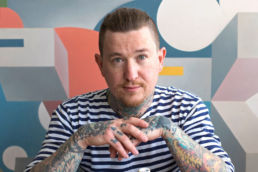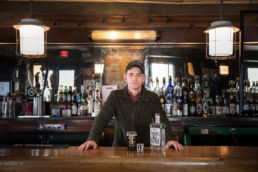words & photography | HOMER LIWAG
He is a bit of a mystery—even to some of his closest friends. Maybe that’s how he prefers it. He is honestly more comfortable behind the camera than the other way around.
Larry Fong is one of the most sought-after cinematographers in Hollywood. He has shot films with JJ Abrams—yes, that JJ Abrams—(Lost, Star Wars: The Force Awakens) and visionary director Zack Snyder (300, Watchmen, Batman v Superman), and his latest epic, Kong: Skull Island, is in postproduction. He’s directly responsible for the epic moving imagery you see on the silver screen and television—and his visuals have been some of the most memorable in recent years. But what fuels his creativity? And why did Tom Cruise think Larry was just a magician?
Unless you’ve been on a deserted island for the last twenty-five years, you have definitely seen Larry Fong’s work. His name may be new to you, but once you know it, it’s hard to forget. It rolls off the tongue like verse.
__________
Early in life, Larry was drawn to the arts, photography, and film. “In the Little League finals, I was hit in the face with a baseball pitch.” Surely, after that, the arts seemed a safer choice. Growing up in the suburbs of Southern California, Larry would draw quietly in his room. He shot Super 8 film shorts in his backyard. One day, Larry was visiting a friend, and a young boy noticed them shooting a film in the neighborhood. That boy turned out to be JJ Abrams. “Meeting Larry at twelve was a gift from the gods,” says JJ. “Suddenly I had an older Asian brother who could teach me how to do animation, record music, make movies. He was a salvation!” Their mutual interests, even in their teen years was uncanny. “We both had the same insanely strange interests. The exact same geeky references,” JJ continues. “We would own the same arcane books, weird toys—to this day, we always seem to acquire much of the same niche stuff.”
A rejection from UCLA’s film school would become an uncharted detour in Larry’s path to his cinematic future.
 Larry’s parents wanted him to graduate in “something,” so he got a degree in linguistics instead. A little disenchanted with the thought of film school, Larry focused on photography. He got a part-time job as a school photographer, shooting class photos and ID cards. But Larry took advantage of the otherwise mundane job by using the company’s equipment to immerse himself in product photography, portraits, and photo-related classes. “On the weekends I would get to use the job’s professional Hasselblad camera and strobe lights to experiment.” Larry was unwittingly on a journey of self-discovery that would form the foundation of his visual style.
Larry’s parents wanted him to graduate in “something,” so he got a degree in linguistics instead. A little disenchanted with the thought of film school, Larry focused on photography. He got a part-time job as a school photographer, shooting class photos and ID cards. But Larry took advantage of the otherwise mundane job by using the company’s equipment to immerse himself in product photography, portraits, and photo-related classes. “On the weekends I would get to use the job’s professional Hasselblad camera and strobe lights to experiment.” Larry was unwittingly on a journey of self-discovery that would form the foundation of his visual style.
Armed with a portfolio, Larry applied to the prestigious ArtCenter College of Design in Pasadena to continue his photography studies. At one point, he took a Basics of Film class. Although still discouraged about filmmaking since his UCLA rejection, his classmates noticed he had a knack for making Super 8 films. A reenergized Larry earned two film scholarships at ArtCenter. He started collaborations with notable classmates Tarsem Singh and Zack Snyder. He helped Zack with a few student films, including one in Zack’s backyard. “He was so dedicated, even back then. He went as far as renting a Bobcat to dig a giant World War I trench in his backyard.” It was days like that that resulted in a thirty-plus-year relationship with the visionary director. “Nothing has changed for us,” Zack recalls. “We’re basically doing the same thing when we make a movie now. It’s an extension of that first experience. There are bigger budgets, more people, bigger scope and scale, but the relationship we have together in making interesting visuals hasn’t changed.”
Soon after ArtCenter, Larry would make his mark in the booming ’90s music-video realm. His videos, The Goo Goo Dolls’ “Iris,” Van Halen’s “Right Now,” and the stylish R.E.M.’s “Losing My Religion,” all won the coveted MTV Music Video of the Year. “‘Losing My Religion,’” directed by my former classmate Tarsem (The Cell, Mirror Mirror), is one of my favorite music videos,” Larry adds. “Tarsem and I really had a chance to do something different from the extravagant big-hair, rock-and-roll look that was popular at the time.” The groundbreaking music video, influenced by the likes of Tarkovsky, Caravaggio, and Saudek, took home six MTV awards that year.
Larry’s notable work in music videos caught the attention of commercial directors. To this day, Larry enjoys the quick turnaround and burst of creativity that television commercial work provides—whether it’s with a ten-year run of hilarious Jack in The Box spots, or epic video game commercials (Battlefield 3, Jeep Call of Duty) echoing the explosive action seen in his recent feature film work.
Around 2003, Larry got a call. It was JJ Abrams, who was developing the soon-to-be television phenomenon, Lost.
 Network producers thought Larry’s experience with award-winning commercials and music videos wouldn’t cut it for the grueling work that television demanded, but JJ wanted Larry. “JJ really went to bat for me. We’d known each other for a long time, been good friends and, separately, have had a certain measure of success.” The studio had been pitching cinematographer reels to JJ but nothing appealed to him. “Larry’s work always has a richness, depth, beauty, and consideration that elevates the moment,” Abrams affirms. “JJ and I lived fairly close to each other and kept in contact through the years, with our many geeky, mutual interests,” Larry adds. “We definitely have a shorthand when we work together.” They would collaborate a few years later on the Steven Spielberg-produced blockbuster Super 8, which reunited the inner kids in Larry and JJ, who had shot Super 8 film movies in the suburbs of southern California decades earlier.
Network producers thought Larry’s experience with award-winning commercials and music videos wouldn’t cut it for the grueling work that television demanded, but JJ wanted Larry. “JJ really went to bat for me. We’d known each other for a long time, been good friends and, separately, have had a certain measure of success.” The studio had been pitching cinematographer reels to JJ but nothing appealed to him. “Larry’s work always has a richness, depth, beauty, and consideration that elevates the moment,” Abrams affirms. “JJ and I lived fairly close to each other and kept in contact through the years, with our many geeky, mutual interests,” Larry adds. “We definitely have a shorthand when we work together.” They would collaborate a few years later on the Steven Spielberg-produced blockbuster Super 8, which reunited the inner kids in Larry and JJ, who had shot Super 8 film movies in the suburbs of southern California decades earlier.
“I’m very lucky to have such a great relationship with Zack and JJ.” Both acclaimed directors have only worked with a handful of cinematographers. “And I’m one of them,” Larry concludes.
Undoubtedly, cinematography comes naturally to Larry. Yet, observers of the man with the unforgettable name, Larry Fong, see a guy not over-obsessed with his work but with the creative process itself.
 A lover of coffee, music, linguistics, magic, and photography, you’d be surprised that all of those loves have a common thread with Larry. “Language is the foundation of every culture. Language, food, and music are important,” says Larry. “They make people what they are, and why they do what they do. Language is the first step in that.”
A lover of coffee, music, linguistics, magic, and photography, you’d be surprised that all of those loves have a common thread with Larry. “Language is the foundation of every culture. Language, food, and music are important,” says Larry. “They make people what they are, and why they do what they do. Language is the first step in that.”
“I love making coffee (we’re not talking instant coffee here), cooking, and music because it’s a creative challenge. I like the process—figuring out how to do it. Making lattes and cappuccinos are about experimenting, mad- scientist-type stuff—figuring out beans and roasts, temperatures, grinds.” But it’s not only about the science; it’s about the people. Friends can save a few bucks by having coffee at Larry’s. “It’s about giving.” He says he may not make the best coffee in the world, but it’s done with love, passion. “It’s a gift to you,” Larry answers humbly.
There seems to be a parallel between the challenge of coffee and cooking, and his love of magic. Maybe herein lies the answer to Larry’s creative process.
On Larry’s large living room floor-to-ceiling bookshelf, the top three rows are exclusively reserved for the magical arts. He loves practicing sleight of hand with playing cards and everyday objects as well as honing mentalism feats such as mind reading and spoon bending. Larry usually starts with a classic or published magic effect, but he always applies his creative process, whether intentional or not. A unique presentation angle or simplifying the sleight of hand can result in an effect better than the original.
 Like learning a new recipe, being a barista, or crafting a clever turn of phrase, practicing magic is a process in which the magician injects their own personality to make it unique. Zack adds, “You can learn cinematography from a book, but it’s the personality of the illusion that makes it unique. Larry has a really strong prism that he puts magic or images through, which is his own way of seeing the world, and it really makes for interesting magic and cinematography.” And when all is said and done, Larry gets to share his newfound skill with others—another gift.
Like learning a new recipe, being a barista, or crafting a clever turn of phrase, practicing magic is a process in which the magician injects their own personality to make it unique. Zack adds, “You can learn cinematography from a book, but it’s the personality of the illusion that makes it unique. Larry has a really strong prism that he puts magic or images through, which is his own way of seeing the world, and it really makes for interesting magic and cinematography.” And when all is said and done, Larry gets to share his newfound skill with others—another gift.
Echoes of Larry’s magical feats transcend film-set walls around the world. “Larry helps bring the crew together with his magic. His magic releases tension and helps remind everyone that we are all involved in one giant magic trick,” JJ Abrams asserts.
“The reason we are drawn to him is because he’s unassuming. He doesn’t expect applause,” says legendary illusionist David Copperfield. “He does his magic and walks away before people can applaud. It’s the ultimate ‘drop the mic.’ The framework is, there is no frame. Having no artifice becomes the style.” Larry admits he has a bit of stage fright. Shooting movies can be quite hectic, but there are always crew members or actors standing by waiting for the cameras to roll. This special context of a movie set is perfect for Larry’s apparently impromptu style. “I get to experiment with new ideas. I have a captive audience.”
 A magician member of the prestigious Magic Castle in Hollywood, he admits he’s more comfortable hanging around magicians then the usual Hollywood personalities. “Magicians tend to be good people,” Larry adds. “I’ve always been shy, but for some reason I meet and become friends with magicians quickly. I love the way magicians think, their point of view.” In fact, Larry had two childhood dreams—one was to be a member of the Magic Castle, and the other, to be a member of the American Society of Cinematographers (ASC). At the time he was too young to really know what they were, but he eventually was accepted at both. The extraordinary twist is that the members-only clubhouses are located directly across the street from each other!
A magician member of the prestigious Magic Castle in Hollywood, he admits he’s more comfortable hanging around magicians then the usual Hollywood personalities. “Magicians tend to be good people,” Larry adds. “I’ve always been shy, but for some reason I meet and become friends with magicians quickly. I love the way magicians think, their point of view.” In fact, Larry had two childhood dreams—one was to be a member of the Magic Castle, and the other, to be a member of the American Society of Cinematographers (ASC). At the time he was too young to really know what they were, but he eventually was accepted at both. The extraordinary twist is that the members-only clubhouses are located directly across the street from each other!
In the tight-lipped, highly competitive world of magicians, however, Larry seems to be immediately welcome. Maybe because Larry is a true student of the art—having actually read all of those magic books on his shelf instead of ingesting the quick-fix YouTube magic most newbies are drawn to.
Copperfield provides some insight. “Magicians are drawn to him because we can feel the synergy of magic and cinema. We instinctively know that it takes blood, sweat, and tears to make all the greatness that is projected on the giant screen seem effortless.” It’s the same as a magician struggling to conquer a new sleight, much less an entire magic performance. “What Larry does, as his real job, is really difficult,” David continues. “And the greats in magic become great by not doing what’s easy.” David and Larry have a great mutual respect for each other. “I love knowing that someone I respect admires the same craft that I cherish.”
JJ Abrams, a lover of magic (and a great magician in his own right), received a Mystery Box from his grandfather when he was a kid. “That Mystery Box, which contains a random assortment of magic tricks, came from the very same magic shop in NYC where I got my start,” David recalls. “That box, which JJ chose to never open because of the power of mystery, ended up inspiring one of the greatest directors of our generation.” David talks about his joy regarding his idols and magic. “Da Vinci co-wrote the first book on magic, which gives me a lot of satisfaction and peace. And in the same way, Larry, one of our great cinematographers whose primary passion is magic, makes me extremely happy.”
Magic and cinema are essentially the same—storytelling through the use of illusions and theater, and it only makes sense that Larry is a master of his craft.
 Cinema, like magic, is in tune with Larry’s love of the creative process. The principles of magic can be applied in filmmaking every day. JJ Abrams adds, “One of magic’s fundamentals is misdirection. Larry’s use of light and shadow compels the audience to look exactly where he wants them to. And if stage magic often—literally—employs smoke and mirrors, then Larry uses those very tools to accomplish his job.”
Cinema, like magic, is in tune with Larry’s love of the creative process. The principles of magic can be applied in filmmaking every day. JJ Abrams adds, “One of magic’s fundamentals is misdirection. Larry’s use of light and shadow compels the audience to look exactly where he wants them to. And if stage magic often—literally—employs smoke and mirrors, then Larry uses those very tools to accomplish his job.”
In Zack Snyder’s 2011 fantasy movie Sucker Punch, there’s a scene with a long camera shot behind the female leads, where the “invisible” camera seems to pass impossibly through dressing room mirrors, blurring the line between reality and, well, reality. This complicated shot—done with no computer generated effects—required sliding mirrors (to avoid reflections of the movie camera), actor doubles, and a master magician’s sense of timing. Although the idea is primarily Zack’s, he credits Larry. “It was my idea, but the only reason I was able to think on those terms was because of my exposure to Larry and the magic world. He and I do talk about illusions a lot, and I think that opens your mind to looking at a problem in a different way. And, of course, he was really into it.”
Zack further reveals, “In Sucker Punch, when Vanessa Hudgens is sitting in front of the mirror, the three of clubs [playing card] is there to homage the fact that [the shot’s] being done as an illusion and not as a visual effect.” That’s just one of several gems to discover. Prominently displayed in random scenes of Larry’s films is that same three of clubs.
Magic just seems to find Larry. It did again in 2013, when he began prepping for the surprise hit Now You See Me, a one-step-ahead-of-you thriller about a group of magicians in the vortex eye of an international heist. Director Louis Letterier (Clash of the Titans, The Transporter) wanted help from someone who knew about magic on a grand scale. Naturally, Larry mentioned his friend David Copperfield. Although the basic premise of the movie was directly inspired by illusions David performed around the world, it’s curious that he wasn’t already aboard from the get-go. As Louis was wondering how it would be possible to get in contact with Mr. Copperfield, Larry pulled out his iPhone and said, “Guess who I have on speed dial?”
“The Now You See Me franchise continues to keep magic cool—with its characters, situations, and of course, the magic,” David adds. “And I love that my friend Larry got to set the visual style.”
David went on to be a co-producer on Now You See Me 2—also a box-office success. With Now You See Me 3 in the works, Larry is proud that he was able to return the hospitality and help bring David and his team into the successful franchise.
 It is common for people in the movie business, from directors to production assistants, to have heard of Larry Fong. His name is easy to spell, easy to pronounce, and hard to forget. He also unwittingly starts trends. People around the world wear shirts that say, “KEEP CALM AND LARRY FONG,” which was coined by Gerry Duggan, a popular writer of the Deadpool comics, as a Christmas present tweet to Larry. A girl in Atlanta started Fans of Fong. Crews on set wear shirts that say, “Fongtastic.” Search for #RehearsalCat on Instagram to see the latest Fong “trend.”
It is common for people in the movie business, from directors to production assistants, to have heard of Larry Fong. His name is easy to spell, easy to pronounce, and hard to forget. He also unwittingly starts trends. People around the world wear shirts that say, “KEEP CALM AND LARRY FONG,” which was coined by Gerry Duggan, a popular writer of the Deadpool comics, as a Christmas present tweet to Larry. A girl in Atlanta started Fans of Fong. Crews on set wear shirts that say, “Fongtastic.” Search for #RehearsalCat on Instagram to see the latest Fong “trend.”
Why such a following? Maybe JJ Abrams knows. “Larry is an incredibly rare combination of introvert and extrovert. Of professional and goofball. He has never forgotten the reasons he’s gotten involved in this business—he celebrates the awe and amazement of the impossible. Working with Larry Fong is a joy. How can someone like that not have fans?”
You may still be wondering why Tom Cruise thought Larry was just a magician.
It turns out Larry had performed magic for the action superstar at various sets and parties. Some time later, Tom and Zack were having a meeting about Zack’s new visual masterpiece, 300. Tom was extremely impressed with the cinematography and finally asked who the shot the film. Zack said, “Larry Fong.” Tom replied, “The magician?”
With the epic superhero film Batman v Superman behind him, and the action/adventure Kong: Skull Island just around the corner, what lies ahead for Larry Fong is still a mystery—even to the adept cinematographer. Perhaps it doesn’t really matter. Whatever it may be, it will surely be a gift to us.
__________
See Larry Fong’s work here and follow Larry’s Instagram.
![]()








